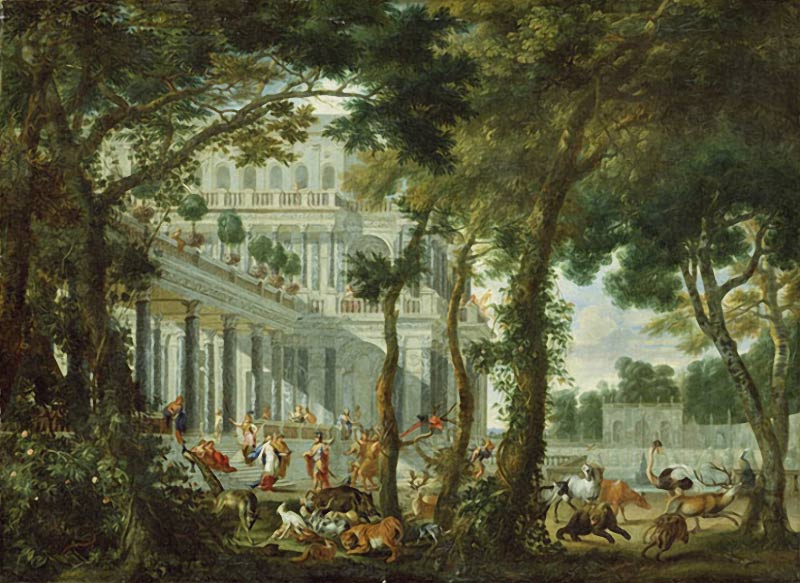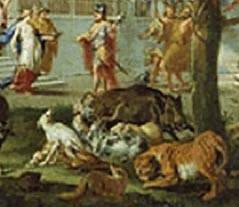German, (1630-1703)

-
Ulysses at the Palace of Circe
- (1667), oil on canvas
- 34.9 x 47.9 in. (88.7 x 121.7 cm.)
- J. Paul Getty Museum
-
Editor’s Note:
The tiny figures of Ulysses, Circe, and her entourage are secondary to the magnificently decorated palace, the lush landscape, and the assortment of lively animals. This painting is a collaborative effort of two painters: the Flemish artist Wilhelm Schubert van Ehrenberg, a specialist in depicting architecture, painted the palace and garden house, while the German artist Carl Borromäus Andreas Ruthart was responsible for the naturalistic display of animals in the foreground. (from Getty Museum)
Here is a close up of the lower section left of center showing Circe (in white), Ulysses and various animals including a boar:

About the Artist
Carl Borromäus Andreas Ruthart (1630-1703) was a German painter who specialized in painting animals. His reputation lay not only in his understanding of animal anatomy and his skill at painting fur but his ability to integrate animals smoothly into a variety of settings, from mythological or biblical contexts to idyllic scenes. Artists such as Wilhelm van Ehrenberg often called on Ruthart to add animals to their architectural or landscape scenes.
Wilhelm Schubert van Ehrenberg (1637-1676) was a Flemish painter with an architectural specialization. He created fantastic Renaissance palaces and churches that reflect his interest in the stage, for his designs often evoke theatrical sets and use dramatic light effects. Most of Van Ehrenberg’s works were painted as collaborations where other artists added the human figures or animals. [DES-01/11]
